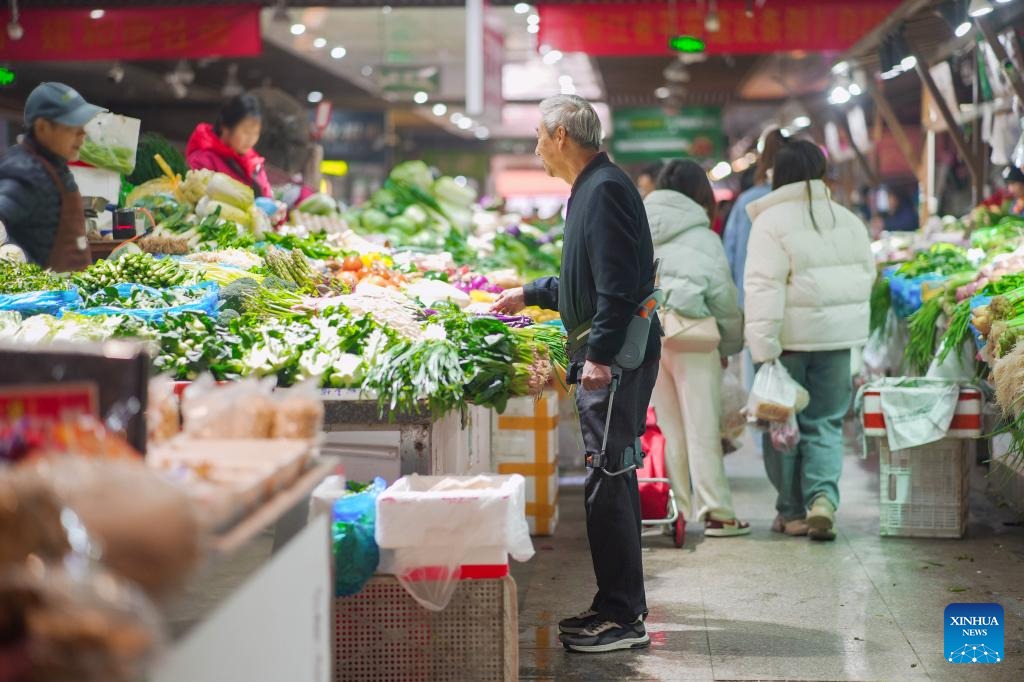CPEC offers chance to revamp Pakistan agriculture
By Ali Sher and Yuzhuo Qiu | chinadaily.com.cn | Updated: 2021-12-22 17:18

Although Covid-19 has adversely affected Pakistans' economy, the pandemic did not impact projects in the China-Pakistan Economic Corridor, which are moving at full speed. Since the second phase of the free trade agreement in 2020, more Pakistani agricultural products have reached the Chinese market. Farmers have greatly benefited from deepened trade ties and bilateral cooperation revitalizing agriculture.
CPEC infrastructure has substantially improved transportationand connectivity, opening low-cost access for Pakistani commodities in the Chinese markets. The free trade agreement benefits Pakistani traders via multi-layered avenues, tapping over $100 billion in the Chinese imported food market. Pakistani's agricultural exports to China have reached $630 million from January to September 2021, a twofold increase over the previous year. The agriculture sector has gained prime importance, and CPEC projects contribute in multifaceted ways – like improved seeds, technology transfer, infrastructure and exports – and puts more emphasis on investment and the economic revival of Pakistan.
The second phase of CPEC has laid a strong basis for agricultural cooperation and trade of various Pakistani commodities to China. In 2021, mango exports to China reached 37.4 tons, a tenfold increase over the previous year. Chinese partners' contract-based chili farming in the country is about to cultivate a cumulative 5,000 acres, and Pakistani chilis are online available at JD.com, a Chinese e-commerce giant. Likewise, onion exports to China are a recent hallmark of deepened agricultural trade. Likewise, Pakistani fish and rice have gained a significant place in Chinese markets. The promised support to acquire modern halal food technologies is the latest development under the CPEC.
Further, China's comprehensive and timely support to counter locust swarms helped avoid a food crisis in the country's southern areas. These are a few examples of recent developments observed under improved business-to-business and people-to-people contracts between the two nations.
CPEC's agricultural trajectory embraces the entire value chain. It covers food production, technology sharing for improving seeds, fertilizers and other inputs. It also includes plans for storage, processing, transportation, and high-quality cold-chain development to add to the country's export earnings. In the coming days, collaborations in precision agriculture and early warning systems will boost crop productivity, climate resilience, water management and help fight natural calamities like locust infestation. Seeking support in climate-smart agriculture could be of greater interest to Pakistan as China's digital agro-economy is about to grow over $ 100 billion. Thus, integrating advanced information technology could help bring a third green revolution.
Under CPEC collaboration, farmers have already achieved a broader trajectory using agricultural drones for spraying crops. Using drones, farmers realize significant savings in labor (around 20-30 laborers per day), water (80 percent ), pesticides (25 percent ), and plant protection (30 percent ), achieving greater precision in crop operations. These technologies are frequently used for wheat, rice and maize, allowing farmers to save up to $60 for each hectare. Further, Pakistan should enhance collaboration and seek support from Chinese companies in cloud technologies, agricultural informatics, big data and e-commercial agriculture. The uptake of these digital technologies would help farmers achieve diversified and high-quality food products such as dairy, cherries and mangoes, which already have been available in Chinese markets.
Learning lessons from China's alleviation of rural poverty could help the country improve small farmers' plight. The Chinese experience developing e-commercial agriculture holds significant potential for rural poverty alleviation and agricultural transformation. Likewise, farmers' capacity-building regarding e-commercial agriculture and digital literacy is needed today, where already established CPEC infrastructure would serve as a bridge to boost exports.
A broader agricultural export trajectory can be accomplished by encouraging small-scale agriculture enterprises through various economic incentives. This would transform value chains, establish diversified industrial networks and expand the volume of processed foods. In this regard, seeking Chinese collaborations for knowledge-sharing and human resource development, particularly in the SEZs established under the CPEC, can be a phenomenal tool to expand agricultural exports to China and beyond.
Yuzhuo Qiu is dean of the School of Business at Nanjing University of Information Science and Technology. Ali Sher is a postdoctoral researcher at the university.
The opinions expressed here are those of the writer and do not necessarily represent the views of China Daily and China Daily website.
If you have a specific expertise, or would like to share your thought about our stories, then send us your writings at opinion@chinadaily.com.cn, and comment@chinadaily.com.cn.
























